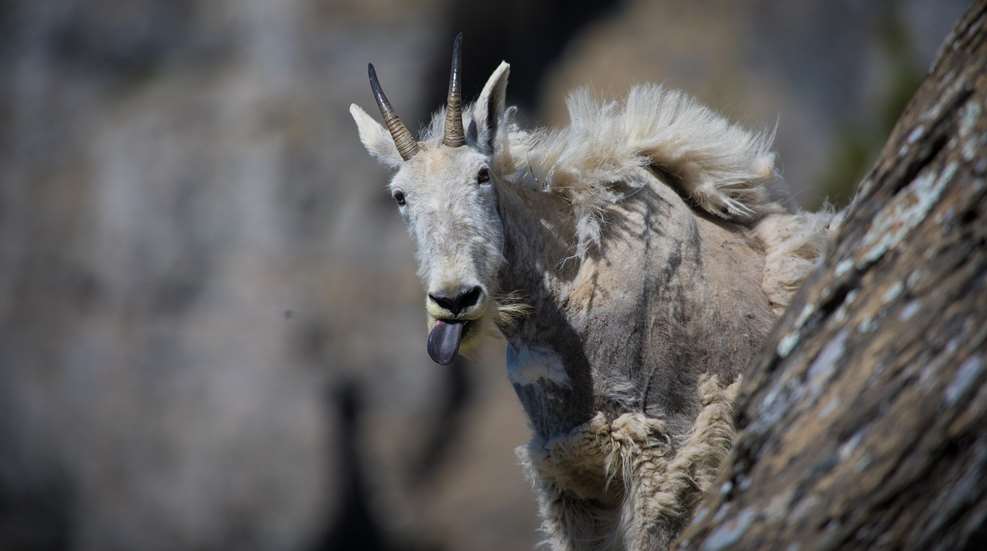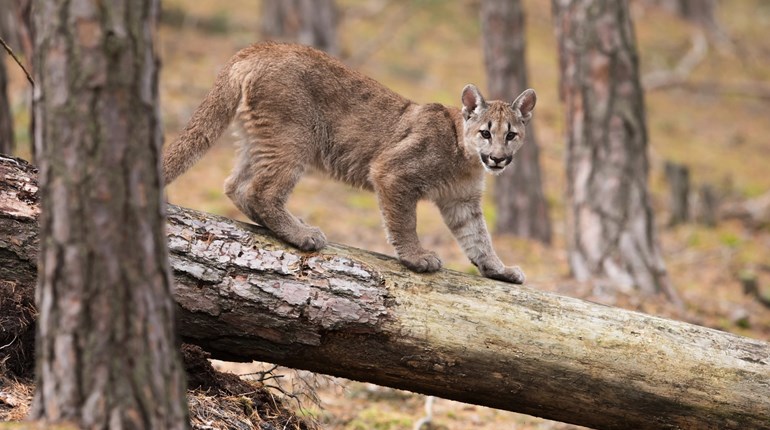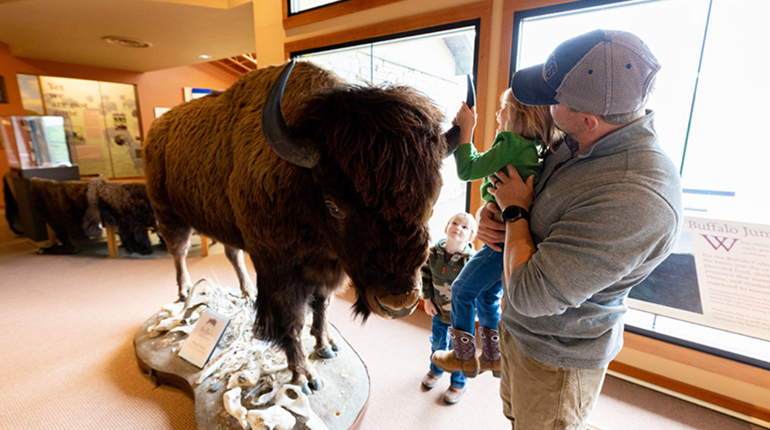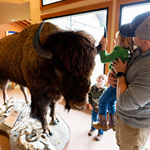
"Never let a mountain goat lick you" may be very odd-seeming advice if you've never had an encounter with a mountain goat, but following that advice could save you a trip to the emergency room. Given its location in Rocky Mountain country, the Utah Division of Wildlife Resources (DWR) has a lot of expertise in high-altitude critters ... and today, it's offering the need-to-know info if you run into a mountain goat in the wild.
As their name suggests, mountain goats are found in high-elevation mountain areas with rugged, rocky alpine terrain. Like many other ungulates, these animals crave salt. Their bodies need it, but salt can be tough to find in some environments. However, human beings have plenty of it--not just in our backpacks, but in our bodies. We excrete it via sweat and urine, and yes, the goats can absolutely smell it, and it absolutely attracts them.
Having a wild animal that clearly isn't rabid (mountain goats aren't particularly susceptible to rabies) approach you of its own volition can be thrilling. And if that critter wants to lick your sweaty palm or legs, what's the harm? Well, the harm is that they aren't going to stop licking when you want them to. Instead, they will begin to bite.
As reported by Boise State Public Radio, "In the past few years at [Montana's] Scotchman Peak, goats have attacked hikers. One person was gored in the leg. Another got bit and needed stitches. In both cases, the hikers let the goats lick their legs before the incidents."
Said Utah Division of Wildlife Resources Once-In-A-Lifetime Species Coordinator Rusty Robinson, “Mountain goats can impale you with their horns, so you don’t want to risk coming into contact with one. Remember that they are wild animals, so always give them plenty of space. They are found in some pretty extreme terrain, so you don’t want to risk getting too close to one while on the edge of a cliff. Be aware of your surroundings, stay alert and don’t put yourself in those situations. If you need to turn around and cut your hike short, do it.
Both billy goats and nanny goats can be dangerous, depending on the circumstances. “Mountain goats are one of the few local big-game species where both the males and females grow horns, so it’s hard to tell them apart,” Robinson added. “However, the female goats (nannies) have a thinner horn at the base and typically have a bigger gap between their horns. The male goats (billies) are also typically larger in size.”
The male mountain goats typically get more aggressive during their breeding season (known as the rut), which typically takes place in November. The nanny goats get more aggressive when they have baby goats (kids). They typically give birth in late May, and then the nannies and kids join up and form large nursery herds. During the summer months, the nannies will mostly graze in meadow areas with abundant feed while they are nursing their kids. The nannies are often territorial during this period, especially when their kids are with them.
Tips to prevent conflicts with a mountain goat
If you encounter a mountain goat while hunting, hiking, or backpacking, here are some tips to help keep you safe:
- Give them plenty of space (roughly 150' or more). Mountain goats will often stand their ground or charge you if you get too close.
- If you see a mountain goat coming down the trail you are on, turn around and head back down the trail to avoid getting too close to them.
- Like other big-game animals, mountain goats can be especially aggressive toward dogs. Keep dogs leashed and under control at all times. It is against Utah law to allow dogs to chase or harass protected hoofed wildlife, like mountain goats.
- If a mountain goat begins approaching you, slowly back away and give it some distance. If it continues approaching, wave your arms and make loud noises to try and scare it away.
- Talk to the land-managing agency for the area where you’re hiking and look for signs at trailheads to know if a particular trail has had reports of aggressive mountain goats. Then, stay alert while hiking in the area.
- Never feed a mountain goat or allow it to lick your skin.







































